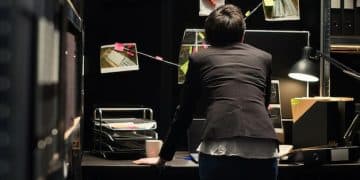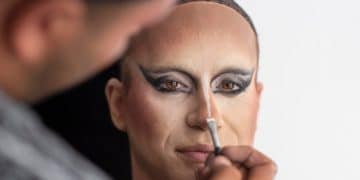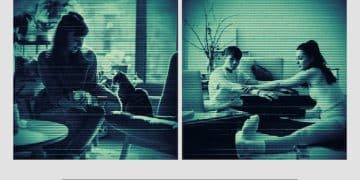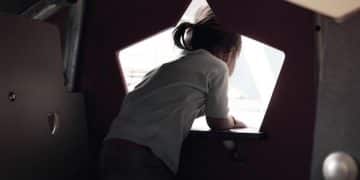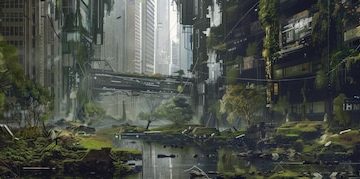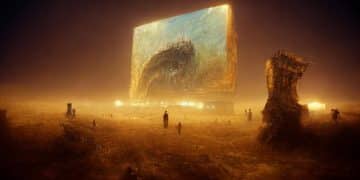The Lost Art of Practical Effects: Why Filmmakers Still Choose Real Over CGI
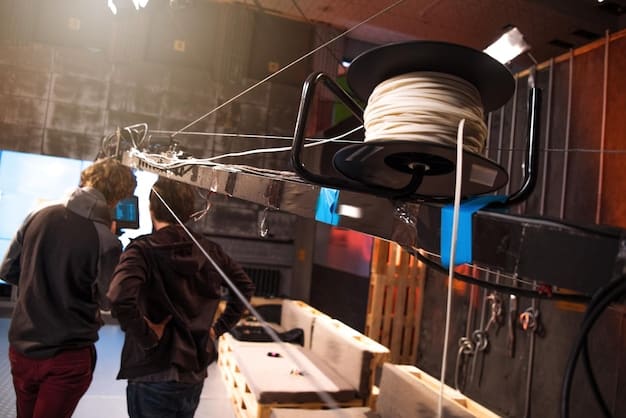
Despite the prevalence of CGI, some filmmakers still prefer practical effects due to their tangible realism, cost-effectiveness for certain scenes, and the unique creative challenges they present.
In an era dominated by computer-generated imagery, it might seem like the art of physical, on-set movie magic is a thing of the past. However, the lost art of practical effects: why some filmmakers still prefer real over CGI is very much alive and kicking. Discover why these tangible techniques remain a vital part of filmmaking.
Why Practical Effects Still Hold Up
The allure of practical effects stems from their ability to create a genuine sense of realism that CGI often struggles to replicate. When an actor interacts with a physical object or experiences a real explosion, the performance is more authentic, and the footage has a raw, visceral quality.
But beyond just realism, practical effects offer unique creative opportunities. They challenge filmmakers to think outside the box and come up with innovative solutions to bring their visions to life. This can lead to more original and memorable visuals than relying solely on CGI.
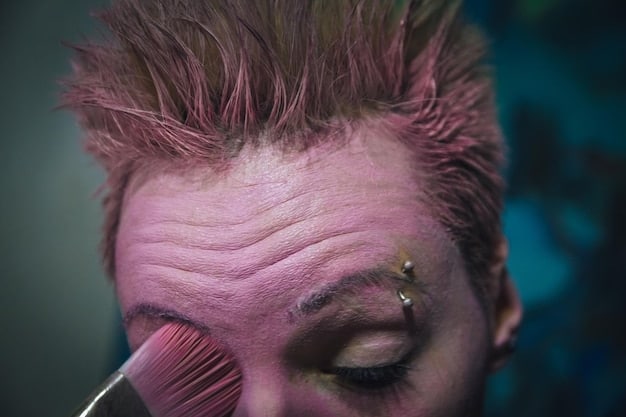
Let’s delve deeper into the reasons why some filmmakers still champion practical effects over the ease and flexibility of CGI.
The Tangible Realism of Practical Effects
One of the primary reasons filmmakers choose practical effects is the inherent realism they bring to the screen. When something is physically present on set, it interacts with light and the environment in a way that CGI often struggles to emulate perfectly.
This realism translates into a more believable and immersive experience for the audience. They can sense the weight and presence of physical objects, the genuine reactions of actors interacting with real elements, and the overall authenticity of the scene.
The Creative Spark and Innovation
Practical effects often require filmmakers to be more inventive and resourceful. They need to figure out how to achieve a visual effect using tangible materials and limited resources. This constraint can spark incredible creativity and lead to unique solutions that CGI might not have inspired.
Think of the elaborate miniature sets used in films like “Blade Runner” or the intricate puppetry in “The Dark Crystal.” These effects were not just technically impressive; they were artistic achievements that added a distinct visual style to the films.
- Authentic Performances: Actors react more naturally to real props and environments.
- Unique Visual Style: Practical effects can provide a distinctive look that sets a film apart.
- Challenge and Innovation: They force filmmakers to be creative and resourceful.
Ultimately, the choice between practical effects and CGI often comes down to the specific needs of the project. However, the enduring appeal of practical effects lies in their ability to deliver a level of realism and creativity that is hard to match with digital tools alone.
Cost-Effectiveness: When Real is Cheaper
While CGI is often perceived as the go-to solution for large-scale or complex visual effects, it can be surprisingly expensive. Depending on the scene and the level of detail required, creating CGI effects can quickly escalate in cost.
Practical effects, on the other hand, can sometimes offer a more cost-effective alternative. For certain types of effects, building a physical prop or set piece might be significantly cheaper than creating a photorealistic CGI version. In fact, depending on the complexity of the CGI required, a practical approach could be more budget friendly.
The Hidden Costs of CGI
The cost of CGI isn’t just about the software and rendering time. It also includes the salaries of the VFX artists, the time it takes to create and refine the effects, and the potential for costly revisions if the director isn’t satisfied with the initial results.
Moreover, CGI can sometimes require extensive post-production work to seamlessly integrate the digital effects with the live-action footage. This can add further time and expense to the overall process.
Examples of Cost-Effective Practical Effects
There are many examples of practical effects that have proven to be more cost-effective than CGI. For instance, creating a miniature model of a building and filming it with forced perspective can be a cheaper way to depict a massive structure than building a full-scale set or generating a CGI replica.
Similarly, using pyrotechnics to create explosions can be more affordable than simulating them digitally. While safety is always a top priority, a well-executed practical explosion can deliver a visceral impact at a fraction of the cost of CGI.
- Miniature Sets: Cheaper than building full-scale sets or creating CGI replicas.
- Pyrotechnics: Cost-effective for creating realistic explosions.
- Forced Perspective: A simple technique for creating the illusion of scale.
In conclusion, while CGI is undoubtedly a powerful tool, it’s not always the most economical option. Practical effects can offer a surprisingly cost-effective alternative for certain types of visual effects, especially when creativity and resourcefulness are applied.
The Tactile Experience for Actors
One of the often-overlooked benefits of practical effects is the positive impact they can have on actors’ performances. When actors are surrounded by real environments, props, and creatures, they can draw on a deeper well of emotion and physicality to bring their characters to life.
Interacting with tangible elements helps actors to fully immerse themselves in the scene, leading to more authentic and believable performances. This is especially true for genres like horror and science fiction, where actors might be required to react to fantastical creatures or dangerous situations.
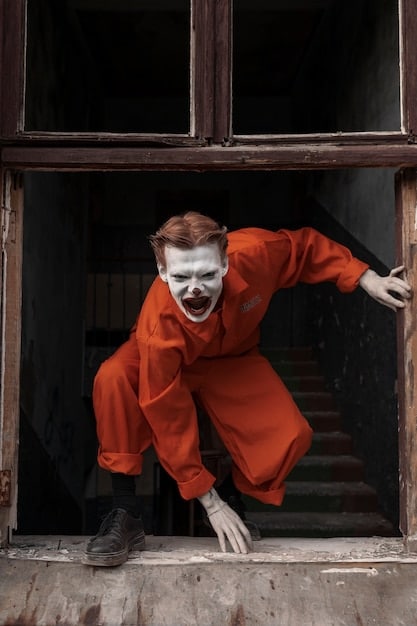
The Power of Physical Interaction
When an actor is genuinely afraid of a monster standing in front of them—even if it’s just a person in a suit—that fear will translate onto the screen. This is much harder to achieve when the actor is simply reacting to a green screen or a tennis ball on a stick.
The same principle applies to other emotions as well. For example, an actor who is holding a real sword and fighting against a physical opponent will likely deliver a more convincing performance than one who is miming the actions against an invisible foe.
Examples of Memorable Practical Effect Performances
Many iconic movie moments are the result of actors reacting to incredible practical effects. Sigourney Weaver’s terror in “Alien” was amplified by the presence of the terrifying Xenomorph suit designed by H.R. Giger. Similarly, Linda Blair’s unsettling performance in “The Exorcist” was made all the more believable by the use of practical makeup and prosthetics.
These performances wouldn’t have been quite as impactful if the actors had been forced to rely solely on their imaginations. The presence of physical effects helped to ground the performances and create a sense of genuine realism.
- Deeper Immersion: Actors can fully immerse themselves in the scene when interacting with real elements.
- Authentic Reactions: Genuine fear and emotion translate onto the screen.
- Iconic Performances: Many memorable movie moments are the result of practical effects and strong acting.
In sum, the tactile experience offered by practical effects can have a significant impact on actors’ performances, leading to more compelling and believable portrayals. This is a valuable asset that CGI alone cannot replicate.
Challenges of Practical Effects
Despite their many advantages, practical effects also come with their own set of challenges. They can be time-consuming, require specialized skills, and sometimes be unpredictable. This makes them less appealing for filmmakers who are working under tight deadlines or with limited resources.
Creating a convincing practical effect often requires meticulous planning, precise execution, and a dedicated team of experts. Mistakes can be costly and time-consuming to fix, making it crucial to get things right the first time. In addition, safety is paramount, especially when dealing with pyrotechnics or other potentially dangerous effects.
Time and Resource Intensive
Building elaborate sets, crafting detailed props, and designing complex mechanical effects can take weeks or even months of preparation. This can put a strain on production schedules and budgets, especially for smaller independent films.
Moreover, practical effects often require specialized equipment and materials, which can be expensive to acquire or rent. This can further limit their accessibility for filmmakers who are working with limited resources.
Unpredictability and Safety Concerns
Unlike CGI, which can be meticulously controlled and adjusted after filming, practical effects are often unpredictable. Explosions might not go off exactly as planned, weather conditions can affect outdoor shoots, and mechanical effects can malfunction.
This unpredictability can be both a blessing and a curse. While it can lead to unexpected and exciting results, it can also create safety hazards or require reshoots, adding to the overall cost and complexity of the production.
- Time-Consuming: Building effects can require weeks or months of preparation.
- Specialized Skills: Requires a dedicated team of experts.
- Unpredictable: Unlike CGI, practical effects are often less controllable.
In conclusion, the challenges of practical effects are real and should not be underestimated. However, by carefully planning, investing in skilled personnel, and prioritizing safety, filmmakers can overcome these obstacles and harness the unique power of practical effects to create truly memorable movie moments.
Modern Films Keeping Practical Effects Alive
Despite the rise of CGI, several modern films and filmmakers continue to champion practical effects, demonstrating their enduring value and appeal. These films often blend practical and digital effects to create a seamless and immersive visual experience.
Directors like Christopher Nolan, Quentin Tarantino, and J.J. Abrams are known for their preference for practical effects whenever possible. They believe that practical effects add a level of authenticity and physicality to their films that CGI alone cannot replicate. These are directors that use practical effects whenever possible, blending it with CGI where needed.
Examples of Recent Practical Effect Triumphs
Christopher Nolan’s “Dunkirk” is a prime example of a modern film that heavily relied on practical effects. The filmmakers used real boats, planes, and explosions to create a sense of realism and immersion that would have been difficult to achieve with CGI alone.
Similarly, Quentin Tarantino’s “Once Upon a Time in Hollywood” features numerous practical effects, including car chases, stunts, and old-fashioned movie magic, to recreate the atmosphere of 1960s Hollywood.
The Resurgence of Animatronics and Puppetry
Animatronics and puppetry are also experiencing a resurgence in modern films. Films like “The Shape of Water” and “Annihilation” feature incredibly detailed and expressive creatures that were brought to life using a combination of practical effects and CGI.
These films demonstrate that practical effects are not just a nostalgic throwback but a viable and valuable tool for modern filmmakers. They can add a unique visual style, enhance actors’ performances, and create a more immersive and believable experience for the audience.
- “Dunkirk”: Used real boats, planes, and explosions for realism.
- “Once Upon a Time in Hollywood”: Relied on practical stunts and old-fashioned movie magic.
- “The Shape of Water”: Features detailed animatronic creatures.
Ultimately, the continued use of practical effects in modern films is a testament to their enduring appeal and their ability to deliver a level of realism and creativity that CGI alone cannot match. It shows that practical effects are not a dying art but a vital part of filmmaking that will continue to evolve and inspire for years to come.
The Future of Visual Effects: A Hybrid Approach
The future of visual effects is likely to be a hybrid approach that combines the best of both practical and digital techniques. This allows filmmakers to leverage the strengths of each method to create a more seamless and immersive visual experience.
Practical effects can provide a solid foundation of realism and tangibility, while CGI can be used to enhance and expand upon these effects, adding details and scale that would be impossible to achieve with practical methods alone. By working in tandem, these two approaches can create visuals that are more compelling and convincing than either could achieve on its own.
The Benefits of Blending Practical and Digital Effects
Blending practical and digital effects allows filmmakers to create visuals that are both realistic and spectacular. For example, a practical explosion can be enhanced with CGI fire and smoke to create a more visually impressive and dangerous-looking effect.
Similarly, a practical creature suit can be augmented with CGI details to create a more seamless and expressive character. This hybrid approach can save time and money while also delivering superior visual results.
The Importance of Planning and Collaboration
To effectively blend practical and digital effects, it’s crucial to plan and collaborate closely between the different departments involved. The practical effects team and the VFX team need to work together from the earliest stages of pre-production to ensure that the effects are seamlessly integrated.
This collaboration requires a shared understanding of the strengths and limitations of each technique, as well as a clear vision of the final visual result. By working together, these teams can create visuals that are greater than the sum of their parts.
- Realism and Spectacle: Blend to create visuals that are both realistic and spectacular.
- Time and Cost Savings: Hybrid approach can save time and money.
- Collaboration: Crucial for seamless integration of effects.
In conclusion, the future of visual effects is not about choosing between practical and digital, but about finding ways to combine these techniques to create the most compelling and believable visuals possible. By embracing a hybrid approach, filmmakers can unlock new creative possibilities and deliver truly unforgettable movie experiences.
| Key Point | Brief Description |
|---|---|
| 🎬 Realism | Practical effects offer a tangible realism that CGI often struggles to replicate. |
| 💰 Cost | Can be more cost-effective than CGI for certain scenes and effects. |
| 🎭 Actor Performance | Provides actors with real elements to interact with, enhancing their performance. |
| 🤝 Hybrid Approach | Combining practical effects with CGI offers the best of both worlds. |
Frequently Asked Questions
▼
Practical effects are visual effects achieved through physical means, such as models, prosthetics, pyrotechnics, and animatronics, created on set during filming rather than in post-production using CGI.
▼
Many filmmakers prefer practical effects for their realism, the way they enhance actors’ performances, and the ability to generate more natural-looking visuals that can be more cost effective for certain scenes.
▼
Not always. While CGI is versatile, it can become costly depending on complexity and detail. Practical methods can be budget-friendly for explosions, makeup, and miniatures, making budget possible.
▼
Examples include Christopher Nolan’s “Dunkirk”, which used real ships and planes, and Quentin Tarantino’s “Once Upon a Time in Hollywood,” which utilized practical stunts and vintage movie techniques.
▼
The future of visual effects involves blending real methods with CGI. Physical effects give a base of realism, while CGI improves and grows these, allowing unique, persuasive visuals through combined expertise.
Conclusion
In conclusion, while CGI has revolutionized filmmaking, the lost art of practical effects: why some filmmakers still prefer real over CGI endures due to its realism, cost-effectiveness, and the creative opportunities it offers. The future of visual effects likely lies in a hybrid approach, blending both techniques to create the most compelling movie experiences.
